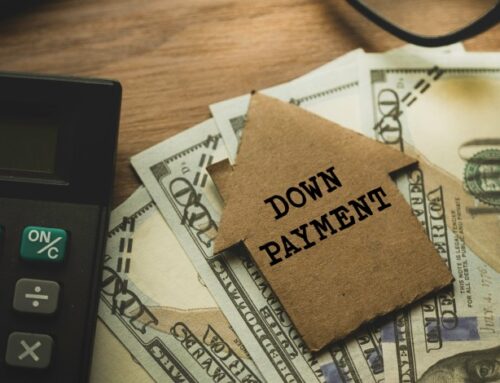Purchasing a home should be one of the most exciting experiences of your lifetime, but many Americans claim to find the whole process stressful and nerve-racking. While specific processes may be easier than others, first-time homebuyers feel the mortgage process may be the worst part.
According to a recent Nerdwallet survey, 42% of Americans classified the mortgage experience as stressful and complicated. The stress of prospective first-time homebuyers may be induced by a lack of knowledge surrounding the home loan process. This guide will outline some of the most important factors you should know heading into the mortgage process.
What Is A Mortgage?
A home loan, also referred to as a mortgage, is an agreement between you (the borrower) and the lender to provide you with a certain amount of money to purchase a home. Upon agreement, the lender has the right to seize your property if you fail to repay the money borrowed plus interest. Repayment is generally completed through monthly installments and over a set period of time—most likely 15 years or 30 years.
The Consumer Financial Protection Bureau suggests there are seven things to look for when shopping around for a mortgage. Some of those include:
- The size of the loan
- The closing costs of the loan, along with any associated lender fees
- The interest rate and the annual percentage rate (APR)
- The type of interest rate—fixed or adjustable
- The terms of the loan and how long to repay the loan
While those factors are important to consider during the mortgage lender search process, it’s more important to focus on an affordable loan rather than how much you qualify for.
What Are The Requirements To Get A Mortgage?
How to get approved for a mortgage may vary depending on the type of home loan you are looking for, but generally, the following factors will influence the lender’s decision if you qualify or not.
- Down Payment: The estimated size of your down payment may affect the mortgage rate the lender will provide
- Credit Score: Your credit score is highly influential when determining your overall interest rate on the mortgage
- Monthly mortgage payment: Lenders may look at your annual income, assets and debts when calculating a monthly payment
What Are The Different Types Of Mortgage Loans?
Understanding and deciding which type of mortgage loan is most suitable for you early in the home buying process may make things a tad less stressful later. Choosing the perfect mortgage for your situation may ultimately lower the down payment and decrease the overall interest rate of the loan. Let’s analyze some of the most common types of home loans and discuss their advantages and disadvantages.
Conventional Mortgage
A conventional mortgage or conventional loan is a term you may hear a lot when shopping around for a home loan. This loan is one of the most popular types of mortgages offered by lenders. A conventional mortgage is a home loan that the federal government does not insure. It’s a conforming loan, meaning that the loan meets the dollar limits set by the Federal Housing Finance Agency (FHFA).
Conventional mortgages don’t have strict guidelines for income requirements or home type and location. However, this type of loan will have stricter requirements for credit score and your overall debt-to-income ratio (DTI).
Some of the advantages of a conventional loan include:
- Individuals or families can qualify for this type of loan by putting as little as 3% for a down payment
- The overall cost of a conventional loan is generally lower than an unconventional loan
The disadvantages of a conventional mortgage are:
- Requirements may be stricter than other types of loans. That includes a FICO score of no less than 620 and a DTI of no more than 45% or 50%
- Will have a higher down payment than government-issued loans
- May have to pay private mortgage insurance (PMI) if the down payment is less than 20%
Conventional loans may be suitable for individuals or families who have a strong credit history and are earning a steady income.
Fixed-Rate Mortgages
A fixed-rate mortgage is a home loan that keeps the interest rate the same throughout the duration of the loan. Generally, with a fixed-rate mortgage, the monthly payment will remain the same. However, slight changes may occur due to local tax and insurance rates. The predictable monthly payment allows borrowers to establish a long-term budget.
Typically, fixed-rate mortgages are offered with a 15 year or 30 year repayment period. Many homebuyers are electing to go with a 30-year mortgage rather than a 15-year loan because the monthly payment is lower when stretched over a longer time. However, homeowners tend to switch to a 15-year fixed-rate mortgage when refinancing.
Some of the benefits of a fixed-rate mortgage include:
- Monthly payments remain the same for the lifespan of a mortgage
- A consistent monthly payment makes it easier for borrowers to create a budget around other expenses
While fixed-rate mortgages are great for certain individuals and families, some drawbacks may turn some people off.
- Typically borrowers end up paying more interest because of the longer-term loan.
- Interest rates may be higher than rates received from adjustable-rate mortgages.
- It may take longer to build home equity.
Borrowers that may see the benefit from a fixed-rate mortgage are individuals or families who are searching for their “forever home.”
Adjustable-Rate Mortgages
Unlike a fixed-rate mortgage, an adjustable-rate mortgage (ARM) will have fluctuating interest rates depending on market conditions. Adjustable-rate mortgages generally are a 30-year term, but the introductory period (no more than 10 years) will have a fixed interest rate that is typically lower than market rates.
Certain ARM’s will include a rate cap that will determine how much your interest rate can change. These rate caps are put in place to protect borrowers from rising interest rates. In addition to rate caps, ARM’s include a rate minimum to prevent the interest rate from going too low for the lender.
Some of the advantages to securing an adjustable-rate mortgage are:
- The opportunity to receive interest rates below market value for the introductory period
- The chance to save money on interest payments
A few drawbacks to ARM’s include:
- If the interest rate increases substantially, monthly payments may become unaffordable to some borrowers and may result in those borrowers defaulting on the loan
- With how often the housing market fluctuates, ARM’s may make it harder to reference the loan or sell the house before the loan ends.
Adjustable-rate mortgages are suitable for borrowers searching for a “starter home” and don’t plan on staying in the house for the entirety of the loan. Use our tool to calculate your Adjustable Rate Mortgage.
Government-Insured Mortgages
The United States government is not a lender, but they provide Americans with the opportunity to become a homeowner. When you hear lenders discussing government-insured loans, they are referring to three agencies that back mortgages.
- FHA loans: These types of loans are backed by the Federal Housing Administration and make homeownership more attainable for low-income borrowers. Required to qualify for FHA loans is a FICO score of 580 to earn the maximum financing with a 3.5% down payment, but a FICO score of 500 is acceptable for those willing to put 10% as a down payment.
- USDA loans: Backed by the United States Department of Agriculture, these types of loans help mid-to low-income borrowers purchase homes in USDA-eligible areas. Some income requirements may need to be met to qualify for a USDA loan. Additionally, some USDA loans may not require a down payment.
- VA loans: These loans are backed by the US Department of Veterans Affairs and are eligible for active-duty military, veterans and their families. Generally, VA loans don’t require a down payment.
The benefits to government-backed loans are:
- The opportunity to save money on interest rates and down payments
- Requirements may be less strict than other conventional loans
The disadvantages of government-backed loans include:
- May have to meet specific requirements to qualify
- Overall borrowing costs may be higher than other loans
- Many government-backed loans have insurance premiums
Home Affordability Rules Of Thumb
Mortgage lenders use a qualification ratio to determine a borrower’s creditworthiness to decide if they’ll extend you a line of credit. The qualification ratio calculates the likelihood for a borrower to repay the loan. Generally, a lender will use either debt-to-income ratio or back-end ratio. The back-end ratio calculates the monthly debt payment vs. your income. With that information in mind, a few rules of thumb can help you determine how much mortgage you can afford.
Rule of 28 – Maximum Mortgage Payment
Financial and home loan experts have a golden rule when it comes to providing mortgage advice. They strongly suggest that your monthly mortgage payment should not extend beyond 28% of your pre-tax income. For example, if your annual income is $100,000, your monthly mortgage payment should not exceed $2,800. However, the lower you can get your payment down, the better.
Rule of 32 – Maximum Housing Payment
The second rule of thumb for mortgage amount is the rule of 32. The rule of 32 suggests that your total housing payment, which includes the mortgage, property taxes, private mortgage insurance, homeowners insurance and any association fee, should not extend beyond 32% of your pre-tax income. For example, if your annual income is $100,000, your total monthly housing payment should not exceed $3,200.
Rule of 40 – Maximum Monthly Debt Payments
The final rule of thumb you should follow to determine how much mortgage you can afford is the rule of 40. The rule of 40 suggests any debts you carry, including a home loan, student loan, auto loan, credit card payment, etc., should not extend beyond 40% of your pre-tax income. For example, if your annual income is $100,000, your total monthly debt payment should not exceed $4,000.
How To Determine How Much Mortgage Can You Afford?
Before you start the process of shopping for a mortgage, it is important to know the maximum amount you can pay per month based on your annual income. While the rules of thumb above should help guide you when determining how much mortgage you can afford, mortgage calculators will help provide you with the accurate information needed to start hunting for the perfect mortgage lender.
Learn More About Mortgages And Home Loans From The Professionals
The homebuying experience should be a thrilling endeavor, but prospective homebuyers find the experience to be the complete opposite. Having a good understanding of how the mortgage process works should help make the process slightly more tolerable.
To learn more about mortgages and personal finance topics, visit our blog. We touch on various financial literacy topics, including how credit scores may affect the loans you qualify for.
Additionally, if you are currently or in the near future looking for a mortgage lender, consider Arizona Central Credit Union. We offer various home loan types, such as conventional mortgages, FHA home loans, VA home loans, no down payment mortgages, jumbo loans and much more. Visit our website to find a mortgage specialist that will guide you through the entire mortgage process.




